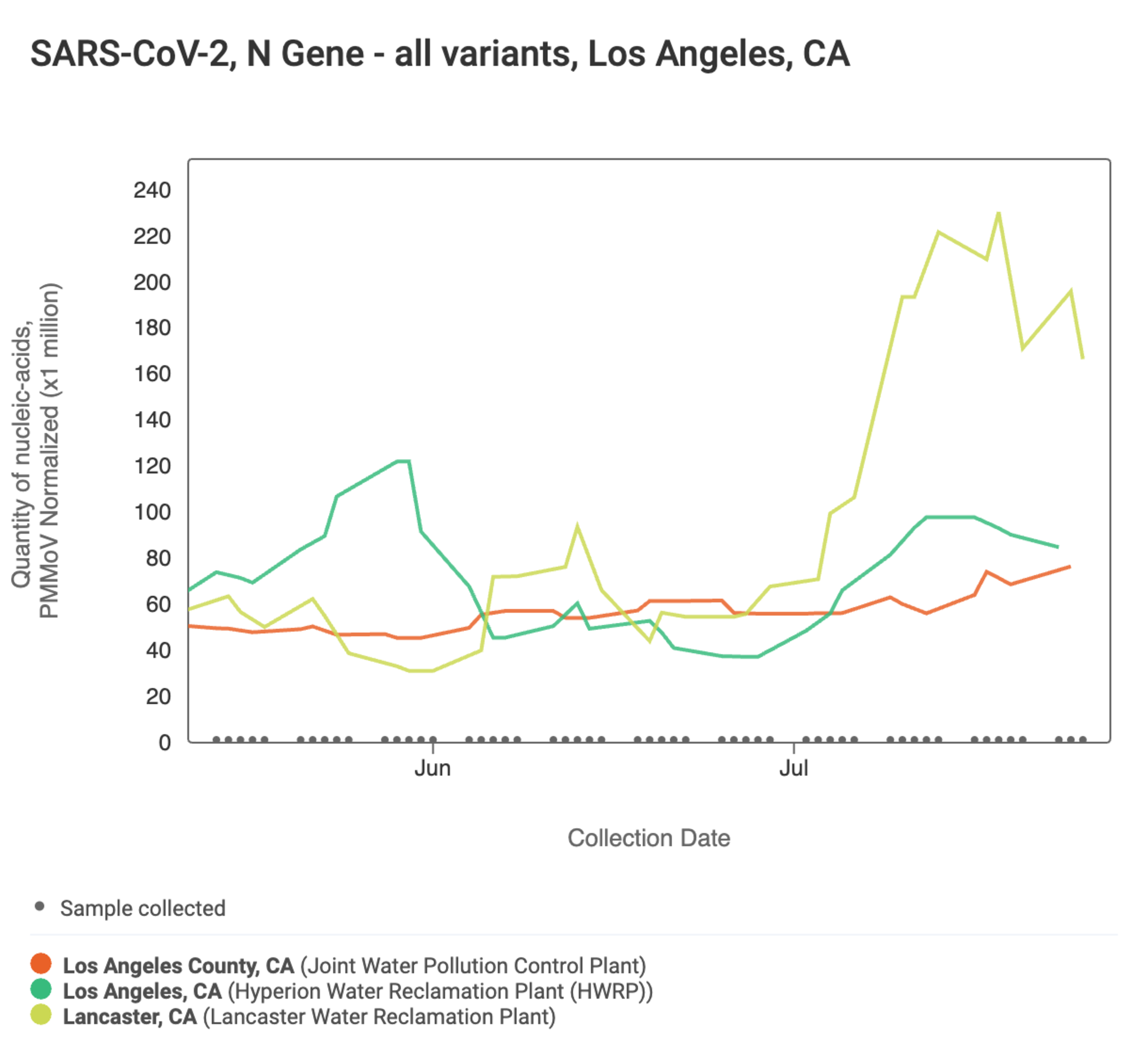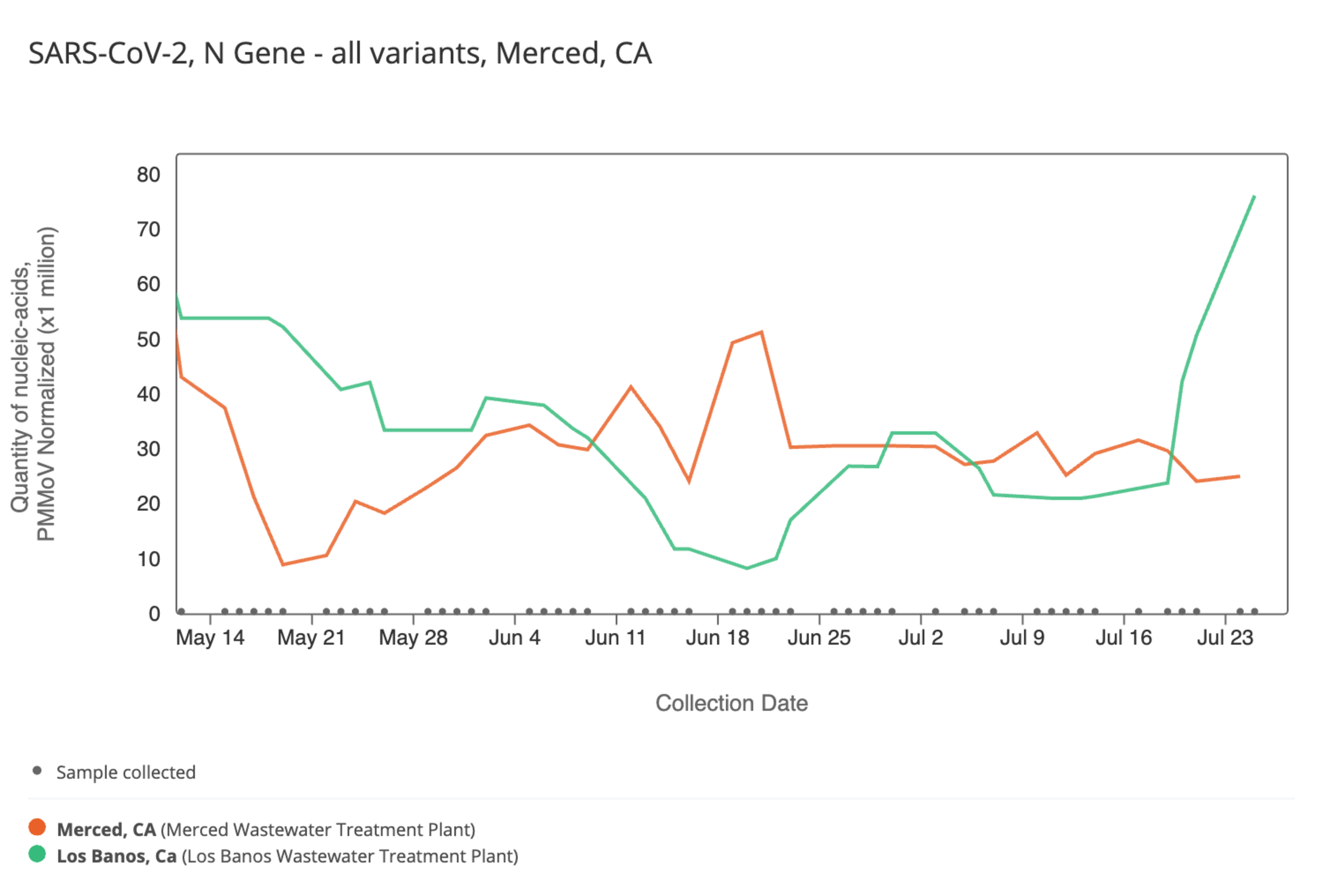Summer is in full swing, bringing hordes of Californians together for parties, concerts and blockbuster movies.
But where the masses flock, Covid follows. Viral levels are slowly rising across California, according to new data by WastewaterSCAN, a program that traces pathogens in municipal sewer treatment plants.
San Francisco’s wastewater shows the state’s largest summertime spike in Covid, surpassing all other California plants by the end of July.
The San Francisco Department of Public Health said it monitors wastewater data to help keep track of trends and confirm local case numbers.
“While data from the Sewer Coronavirus Alert Network indicates an uptick, Covid-19 rates remain much lower than prior years,” a DPH spokesperson said. “Currently, we do not expect more severe disease or hospitalizations for people who are up to date on their vaccinations.”
Still, Covid is spreading throughout the state, and not just in the Bay Area. By late July, sewersheds in Los Angeles County and elsewhere in Southern California recorded spikes of their own.
The rise appears to be driven by the “XBB” Covid variant—called “Arcturus (opens in new tab)” by some—which was first detected in San Francisco’s wastewater in January, according to WastewaterSCAN. Public health experts told KQED that it was set to become the dominant strain (opens in new tab) in the Bay Area this summer.
Other California municipal sewersheds showing a substantial rise in Covid include those in Palo Alto, San Bernardino, San Rafael, Sausalito, Half Moon Bay, Lancaster, Los Banos, Riverside and Turlock.
While Covid is rising, present case levels remain below the rates seen during winter flu season. In some areas—such as Alameda County (opens in new tab)—Covid levels in wastewater do not appear to be spiking significantly.
Not every California county screens its wastewater for Covid and other pathogens, however. WastewaterSCAN partners with 58 sewershed plants across the state, but notably, no jurisdictions north of Sacramento participate in the program.
“U.S. Covid-19 rates are still near historic lows after seven months of steady declines,” CDC spokesperson Kathleen Conley told the San Francisco Chronicle (opens in new tab) in a statement. “The U.S. has experienced increases in Covid-19 during the past three summers, so it’s not surprising to see an uptick.”
“We continue to urge all San Franciscans to stay safe by staying up to date on their vaccinations, having a supply of test kits, keeping masks handy during times of high community spread or when extra precaution is needed, know how to reach a doctor (especially to obtain Paxlovid treatment if you test positive for Covid-19),” a DPH spokesperson said.
Check out these charts from WastewaterSCAN to see where Covid is rising in California.
Santa Clara

Los Angeles

Marin

Merced

Riverside

San Mateo

Santa Cruz

